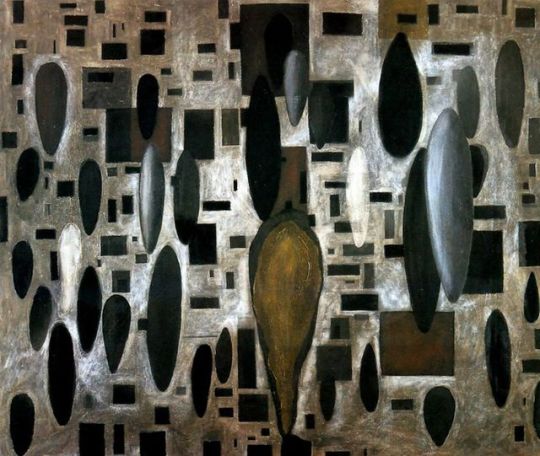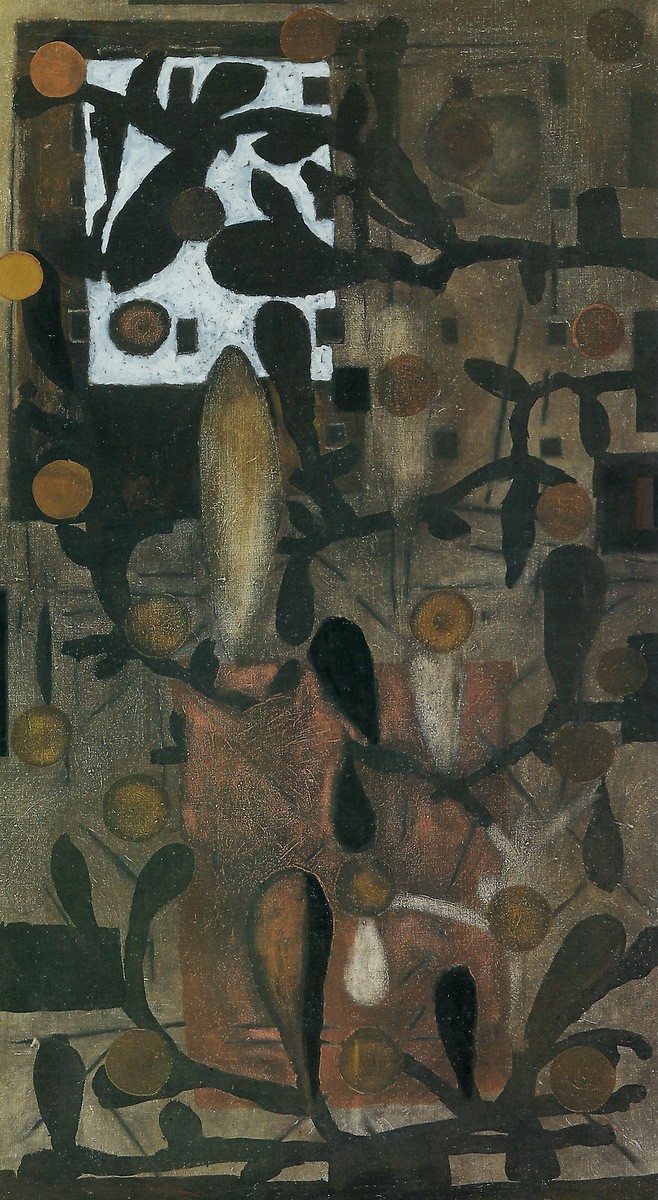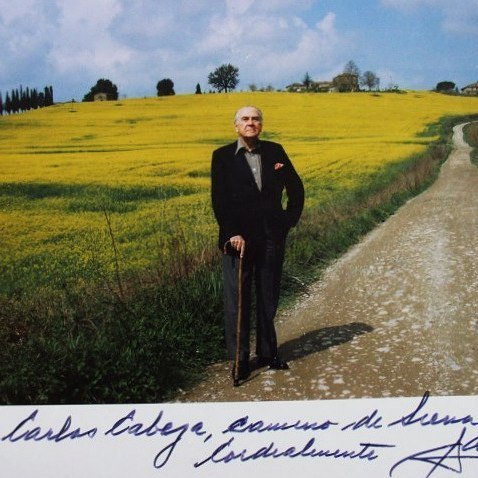#alfredoboulton
Photo

Reposted from @micaracasantigua Día del Artista Plástico Es #AlfredoBoulton quien en un primer momento se acerca a #ArmandoReverón como crítico e historiador de arte. Maravillado por su obra Boulton comienza a visitarlo con frecuencia en la década de 1930, haciendo anotaciones de las características de su #pintura y de todo cuanto rodeaba el acto creador del artista. Reverón fue un intuitivo –dirá–, un hipersensible que sintió la luz y los colores y pintando a veces en el paroxismo de la demencia, lograba las más sorprendentes e inesperadas expresiones [...]. Las líneas, los arabescos surgían en ritmo delirante y casi sin contenerse, se iba al Playón y de pie sobre las rocas salpicadas de olas, sujetada la cintura por pesadas piedras para no perder el equilibrio, semejaba a un Tritón demente, maltrataba los deleznables lienzos hasta plasmar la deslumbrante armonía y el ritmo salvaje y voluptuoso del mar [...]. En esos momentos perdía todo sentido de juicio. Texto: «Armando Reverón o la voluptuosidad de la pintura». Catálogo de la Exposición Retrospectiva de Armando Reverón. Museo de Bellas Artes de Caracas, 1955. Ese gran #pintor, Armando Julio Reverón Travieso, nació en #Caracas tal día como hoy 10 de mayo del año 1889. En su honor, se celebra en el país el #DíaDelArtistaPlástico conmemorando su natalicio. Retrato del gran Armando Reverón Foto: Alfredo Boulton Año: 1934 Lugar: Castillete, Macuto - Litoral Central, estado Vargas, Venezuela #Venezuela #DíaDelArtistaPlásticoEnVenezuela #ArtistaPlásticoVenezolano#JoyaDeLasArtesPlásticasVenezolanas #micaracasantigua - #regrann (en Isla de la Cuarentena) https://www.instagram.com/p/CABrc4mHO2_/?igshid=nkmr7c3ipg3l
#alfredoboulton#armandoreverón#pintura#pintor#caracas#díadelartistaplástico#venezuela#díadelartistaplásticoenvenezuela#artistaplásticovenezolano#joyadelasartesplásticasvenezolanas#micaracasantigua#regrann
0 notes
Photo

Homeophathic Mountain - 200 cm x190 cm- Acrylic on canvas -2007-------------------------📍“Carlos Cabeza’s work is based on continuity and the rhythm of movement within a space. His inspiration comes from a spiritual point-of-view and flows from his mind onto the canvas – almost as if whistling,” said Ascanio. Renowned art critic and cultural historian Alfredo Boulton has said of him: “The individuality of Cabeza’s expressiveness places him in a special niche within contemporary painting.” #AlfredoBoulton https://www.instagram.com/p/Bpw_MS3Hy_ajIKD_m8MfCNvTgA4-6PsXjNRSDc0/?igshid=jzrje8rjdmxo
0 notes
Photo

Alfredo Boulton (1908–1995), art critic, historian, and photographer, was one of twentieth-century Venezuela’s most prominent intellectuals. Considered a touchstone in the art history of Venezuela and Latin America, Boulton is also remembered for his role as a patron of the arts. Nevertheless, his large body of photographic work, focusing mostly on the people, landscapes, art, and history of Venezuela, is little known
0 notes
Photo







Alfredo Boulton About Carlos Cabeza . Exposition .Galeria Oscar Ascanio 1994.
Among the most thrilling moments of a painter is his encounter with the pristine silence of his canvas. As yet no statement has been made, and all which is yet to happen exists as an embryo in the mind of the artist. Creation is still to come. That instant, the birth of a line, of a stroke, is preceded by an idea. It is one of the great moments of the creator of images within the subconscious process which impels the visual representation of a concept. A curve, an angle, change totally the tenor of expression and acquire form and substance at the supreme instant when the artist takes up his brush and initiates the birth of his painting. What follows is already contained in this beginning. The development of the creation, within a certain generic order, will be in keeping with various factors of style characteristic of the artist’s sensibility. But it is the original moment which is to determine the final outcome of the image.As the canvas is in a state of untouched purity, the artist is, in contrast, filled with a world of infinite shapes, lines and volumes. Two opposite conditions, with the victor ever the creator of the final outcome. In our case, it is always Carlos Cabeza who draws from his world of symbols those forms which create an ecological landscape of vegetable structures, branches, leaves, forests, presented mysteriously in the artist’s own language. That language issues from his intimate visual universe, as from a dream, suddenly shocking us with a monochrome on the white canvas, with dramatic linear black. Sometimes we glimpse his dream world in new colors issuing from his warm, rich palette. At other times, within the night shadows, and as in a dream, volumes appear in the from of objects suspended in a vacuum; they exude an aura of mystery and fascination for the viewer.The individuality of Cabeza’s expressiveness places him in a special niche within contemporary painting. I have followed his work for over a decade, observing unexpected artistic turns at each stage of his variations. This has led me to consider him a very serious analytic artist, calm and aware of his pictorial expression. That expression is eminently personal, unique and suggestive, imbuing his work with a special attraction. One observes what would seem to be a radical change in his pictorial imagery. Undoubtedly, there are new chromatic ranges, new graphic designs in the reproduction of certain forms. But the artist maintains, as before, full control of the ambiance. His mastery of white is notable, as in earlier periods. As certain artist repeatedly employ especial chromatic ranges in their artistic vocabulary, a frequent phenomenon in the long history of painting, so Cabeza recurrently employs white as a tonality, if one can call white a tonality. The viewer becomes aware of his rapport with white as he enveloped by the painter’s magnetic chromatic expressiveness.That traditional concept of artist expression has changed fundamentally. Frequently, art has become an exercise in unpleasantness and horror. The idea prevalent since earliest times that man should find balm and pleasure in art has today been transformed into the belief that pleasure is to be derived from the negative reactions which art can engender. But in the work of Carlos Cabeza one can still experience the joy of viewing gratifying images. If only for the satisfactionInthis produces in the observer, it is certainly worthwhile to view this artist’s paintings at length.ALFREDO BOULTON , who was for many years a member of The International Council of The Museum of Modern Art...
Catalogue, Exposition Carlos Cabeza, Galeria Oscar Ascanio Gallery , 16 de july 1994.
0 notes
Photo

ALFREDO BOULTON -About CARLOS CABEZA - I have followed his work for over à décade,observing unexpected artistic turns at each stage of his variations .this has led me consider him à very sérius analytic artist, calm and aware of this pictorial expression. that expression is eminently personal ,unique and suggestive, imbuing his work with a spécial attraction .ALFREDO BOULTON.. Who was for many years à member of council of thé Museun of Modern Art .Ny (Moma) https://www.instagram.com/p/BW7hOoDDZSBiKMyIcsizyYZymemcEV5vzlOFg80/?utm_source=ig_tumblr_share&igshid=1kuzx28mex889
1 note
·
View note